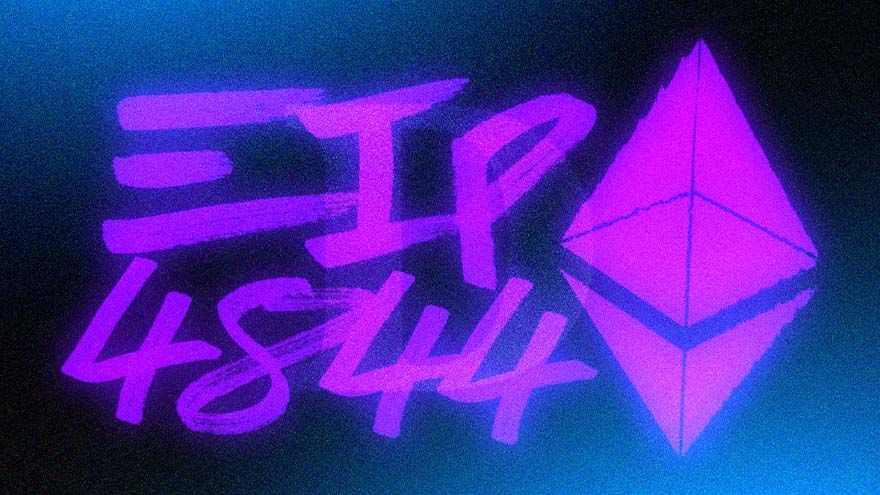Despite Ethereum’s Shapella upgrade going live just three weeks ago, the Ethereum Foundation is already looking ahead to the network’s next upgrade, dubbed Dencun.
According to a May 3 blog post from Ethereum Foundation community manager Tim Beiko, Ethereum’s core developers are already in “the final stages of planning” for Dencun.
“We currently have a tentative set of [Ethereum Improvement Proposals] included in the next network upgrade,” Beiko said.
The primary update included in Dencun is EIP-4844, also known as “Proto-Danksharding” or “The Surge.” Researchers anticipate the update will reduce the costs associated with transacting on Ethereum Layer 2 by orders of magnitude. Beiko did not offer any timeline for when Dencun might be activated.
The news comes as Layer 2 networks have emerged as the leading Ethereum scaling solution. Layer 2s surpassed the Ethereum mainnet by daily transaction volume in February, with L2s currently beating Ethereum by double with 2M transactions daily. L2 transactions peaked at nearly 4M six weeks ago, while mainnet activity trended steady at roughly 1M each day for the past six months.

L2s represent a combined total value locked (TVL) of $9.3B, according to L2Beat, equal to one-fifth of the entire DeFi TVL, according to DeFi Llama.
The Surge
EIP-4844 will replace the blockspace-intensive “calldata” currently stored on-chain alongside transactions with “blobs,” with analysts tipping the upgrade will improve Layer 2 throughput by orders of magnitude. Unlike calldata, Blobs do not compete with Ethereum transactions for gas, significantly reducing the blockspace associated with processing transactions on L2.
In a recent appearance on The Defiant Podcast, Carl Beekhuizen of the Ethereum Foundation said the cost of storing data on-chain is the main barrier restricting the scalability of Layer 2 networks. “The idea behind Danksharding and EIP-4844 is to provide really cheap data storage… so the L2s can provide cheap transactions to their users,” Beekhuizen said.
Other Confirmed Upgrades
Beiko confirmed that Dencun will include at least three other upgrades.
EIP-1153 will introduce “transient storage,” which allows certain data to be discarded from transactions rather than stored on-chain. The upgrade will further improve blockspace availability and reduce the costs associated with storing data on-chain.
EIP-6475, also called SSZ Optionals, is a companion to proto-danksharding — which introduces a new type of transaction that uses simple serialize (SSZ) encoding. Beiko said EIP-6475 ensures transaction formats are forward-compatible future SSZ-upgrade devs plan to introduce in the future.
EIP-6780 will deactivate the SELFDESTRUCT opcode, which is used to terminate a smart contract. Beiko said the function is not behaving as expected for certain use cases, adding that client teams are currently considering different solutions for modifying the code.
Ambitious Roadmap
Ethereum is currently undergoing a period of significant transformation which began with the Merge last September, transitioning Ethereum to Proof of Stake consensus. Once the Surge is live following Dencun, Ethereum will undergo three other major upgrades in the form of the Verge, the Purge, and the Splurge.
The Verge will introduce Verkle trees and stateless clients to make Ethereum more lightweight and bolster decentralization. Vitalik Buterin, Ethereum’s co-founder and chief scientist, said that after The Verge, users will be able to launch nodes “without having hundreds of gigabytes on your disc.”
The Purge will remove old history from the blockchain, meaning nodes won’t be required to store the entire history of the blockchain. The network will delete transaction data after it is 30 days old, with infrastructure providers like the Etherscan block explorer expected to continue compiling older historical data.
Finally, the Splurge will introduce “all of the other fun stuff” bolstering the network’s efficiency and performance not included in other upgrades.
Ethereum’s core devs expect the network will enter a phase of relative stability following the Splurge, with Vitalik predicting that Ethereum “will look more like a system that optimizes for safety and predictability.”
Read More: thedefiant.io









 Bitcoin
Bitcoin  Ethereum
Ethereum  Tether
Tether  XRP
XRP  Solana
Solana  USDC
USDC  Dogecoin
Dogecoin  TRON
TRON  Cardano
Cardano  Lido Staked Ether
Lido Staked Ether  Wrapped Bitcoin
Wrapped Bitcoin  Hyperliquid
Hyperliquid  Wrapped stETH
Wrapped stETH  Sui
Sui  Chainlink
Chainlink  Avalanche
Avalanche  Stellar
Stellar  LEO Token
LEO Token  Bitcoin Cash
Bitcoin Cash  Toncoin
Toncoin  Shiba Inu
Shiba Inu  Hedera
Hedera  USDS
USDS  WETH
WETH  Litecoin
Litecoin  Wrapped eETH
Wrapped eETH  Monero
Monero  Polkadot
Polkadot  Binance Bridged USDT (BNB Smart Chain)
Binance Bridged USDT (BNB Smart Chain)  Ethena USDe
Ethena USDe  Bitget Token
Bitget Token  Pepe
Pepe  Pi Network
Pi Network  Coinbase Wrapped BTC
Coinbase Wrapped BTC  WhiteBIT Coin
WhiteBIT Coin  Aave
Aave  Uniswap
Uniswap  Dai
Dai  Bittensor
Bittensor  Ethena Staked USDe
Ethena Staked USDe  Aptos
Aptos  NEAR Protocol
NEAR Protocol  Cronos
Cronos  OKB
OKB  BlackRock USD Institutional Digital Liquidity Fund
BlackRock USD Institutional Digital Liquidity Fund  Jito Staked SOL
Jito Staked SOL  Internet Computer
Internet Computer  Ondo
Ondo  Ethereum Classic
Ethereum Classic